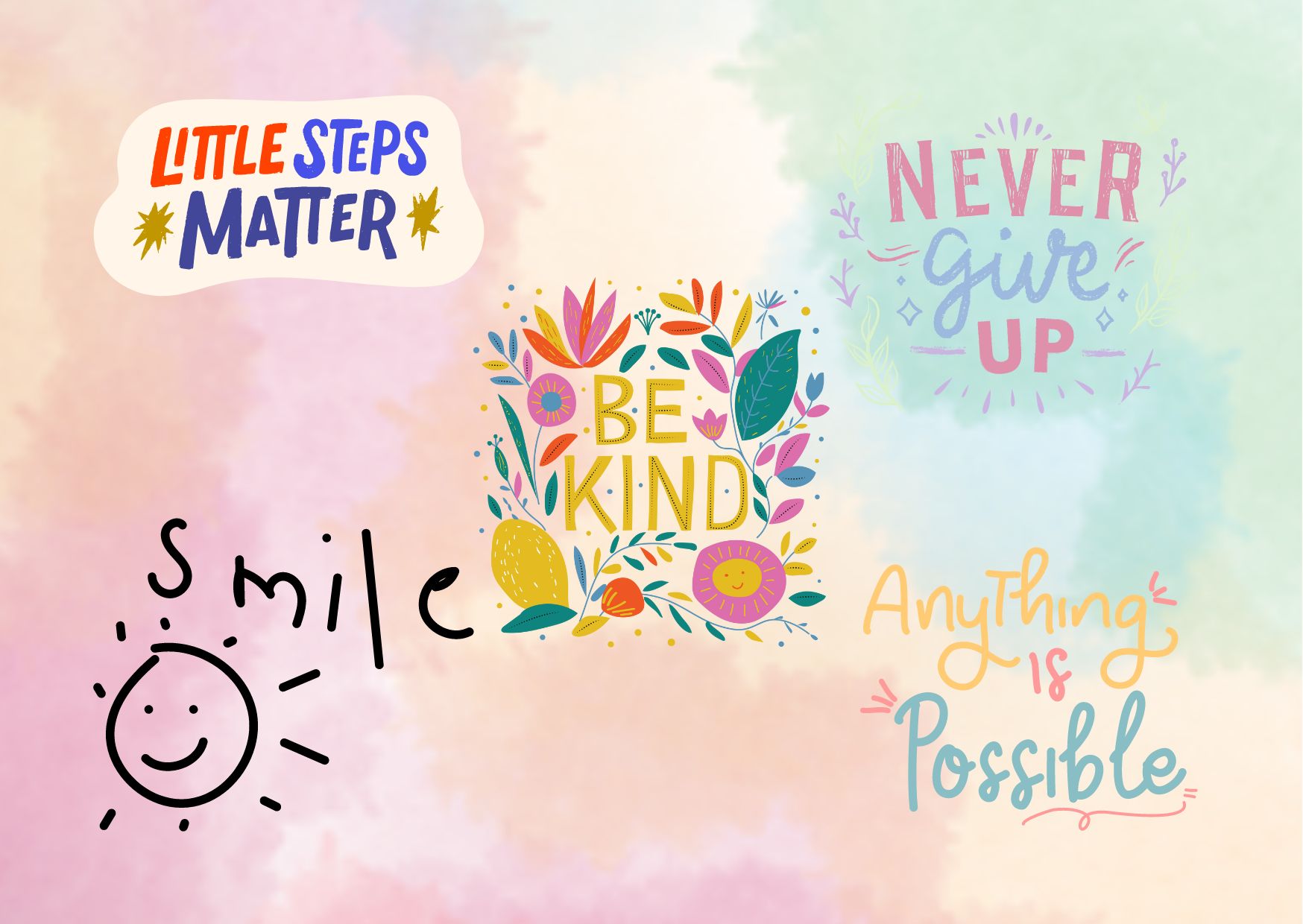Top 15 Positive Affirmations for Anxiety
Positive affirmations, the practice of repeating self-help statements that embody self-worth and personal principles, emerge as a pivotal tool in managing anxiety and fostering a positive mental outlook, even under stress. These affirmations, when practiced consistently, not only aid in supplanting negative self-talk with empowering messages but also prime the subconscious to concentrate on positive and uplifting thoughts, thereby offering a promising technique for anxiety relief including coping with symptoms such as panic attacks, social anxiety, and performance anxiety.
Their utility spans from diminishing stress to enhancing feelings of self-love, worth, and acceptance, making them a crucial component for achieving personal growth and developing robust coping skills in the face of anxiety disorders. This article delves into the science behind positive affirmations as a form of cognitive-behavioral therapy, illustrating their effectiveness in anxiety management through the lens of mindfulness, positive thinking, and a holistic approach to mental health. Furthermore, it guides on seamlessly integrating affirmations into daily routines, overcoming common challenges, and amplifying anxiety relief with additional relaxation techniques, setting the stage for a transformative journey towards enhanced mental well-being.
Understanding Anxiety and Its Impact
Understanding the multifaceted nature of anxiety and its profound impact on individuals is essential. Anxiety, a normal emotion that can motivate us to solve problems and stay alert, becomes problematic when it interferes with daily life. The experience of anxiety varies widely among individuals, but common elements include feelings of panic, stress, and self-doubt. Amy Straker’s journey with anxiety illustrates this well. Despite various interventions including NHS counselling, hypnosis CDs, and self-help books, her anxiety persisted, manifesting as uncontrollable negative thoughts and physical symptoms like intense heat and nausea during panic attacks. This narrative underscores the complexity of managing anxiety and the necessity for personalized approaches.
- Symptoms of Anxiety:
-
- Mental: Feelings of dread, difficulty concentrating, irritability.
- Physical: Restlessness, dizziness, shortness of breath, heart palpitations.
- Behavioral: Avoiding certain places or situations, appearing fine outwardly while still experiencing symptoms.
- Types of Anxiety Disorders:
-
- Generalized Anxiety Disorder (GAD)
- Panic Disorder
- Social Anxiety Disorder
- Obsessive-Compulsive Disorder (OCD)
- Phobias
The path to managing anxiety involves understanding its causes, which can range from genetics to current life situations. Effective treatment and management strategies include speaking to a GP, engaging in talking therapy, and exploring medication options. Moreover, self-help tips like practicing mindfulness, which Amy found beneficial, can play a crucial role. Mindfulness, a form of meditation focusing on observing thoughts without judgment, has scientific backing for its effectiveness in altering brain structure and managing anxiety. Anxiety’s impact extends beyond mental health, increasing the risk of long-term physical health problems and affecting one’s ability to enjoy life. Recognizing anxiety’s pervasive effects is the first step towards seeking help and finding strategies that work for the individual.
The Science Behind Positive Affirmations
Positive affirmations, simple as they may seem, are backed by a robust scientific framework that explains their efficacy in managing anxiety and promoting mental well-being. Here’s a closer look at the science behind positive affirmations and how they influence our brain and behavior:
- Neuroplasticity and the Brain’s Reward System:
-
- Activation of the Brain’s Reward System: Repeating affirmations stimulates the brain’s reward pathways, much like physical rewards do, reducing pain perception and enhancing the ability to endure difficulties. This activation leads to feelings of pleasure and joy, making the practice of affirmations rewarding in itself.
- Neuroplasticity: The brain’s ability to reorganize itself by forming new neural connections throughout life is known as neuroplasticity. Positive affirmations leverage this trait by gradually reshaping our thinking patterns and responses to stress, thereby altering our mental landscape over time for the better.
- Impact on Mental and Emotional Well-being:
-
- Stress Reduction and Problem-solving: Studies have shown that engaging in self-affirmation can significantly lower stress levels and improve problem-solving capabilities, especially under high-stress conditions. This is crucial for individuals who face chronic stress and anxiety, providing them with a tool to navigate challenging situations more effectively.
- Enhanced Self-perception and Focus: By affirming one’s values and strengths, individuals can shift their focus from immediate problems to a broader, more positive view of themselves. This not only fosters a stronger sense of self-worth but also diminishes resistance to threatening messages, making it easier to accept and act on health-related advice.
- Real-world Applications and Success Stories:
-
- Prominent Figures and Healing: Historical and contemporary figures like Napoleon Hill, Louise Hay, Dr. Bernie Siegel, and Dr. Lissa Rankin have advocated for and demonstrated the transformative power of affirmations in achieving success, healing from diseases, and overcoming personal traumas. Their stories underscore affirmations’ role in personal growth, healing, and the achievement of extraordinary goals.
- Cognitive-Behavioral Therapy (CBT) and Education: In therapeutic settings, affirmations are used to complement cognitive-behavioral therapy, helping individuals restructure cognitive distortions and enhance self-regulation skills. Furthermore, affirmations have been shown to promote academic achievement, indicating their utility beyond personal development into areas such as education and professional success.
The integration of positive affirmations into daily life taps into the brain’s inherent plasticity and reward mechanisms, offering a scientifically grounded method to reduce anxiety, improve mental health, and foster an overall sense of well-being. Through consistent practice, individuals can harness the power of affirmations to navigate life’s challenges with greater resilience and positivity.
How to Craft Effective Positive Affirmations
Crafting effective positive affirmations involves a thoughtful process that tailors statements to one’s personal experiences and goals. Here’s a structured approach to creating affirmations that resonate and empower:

